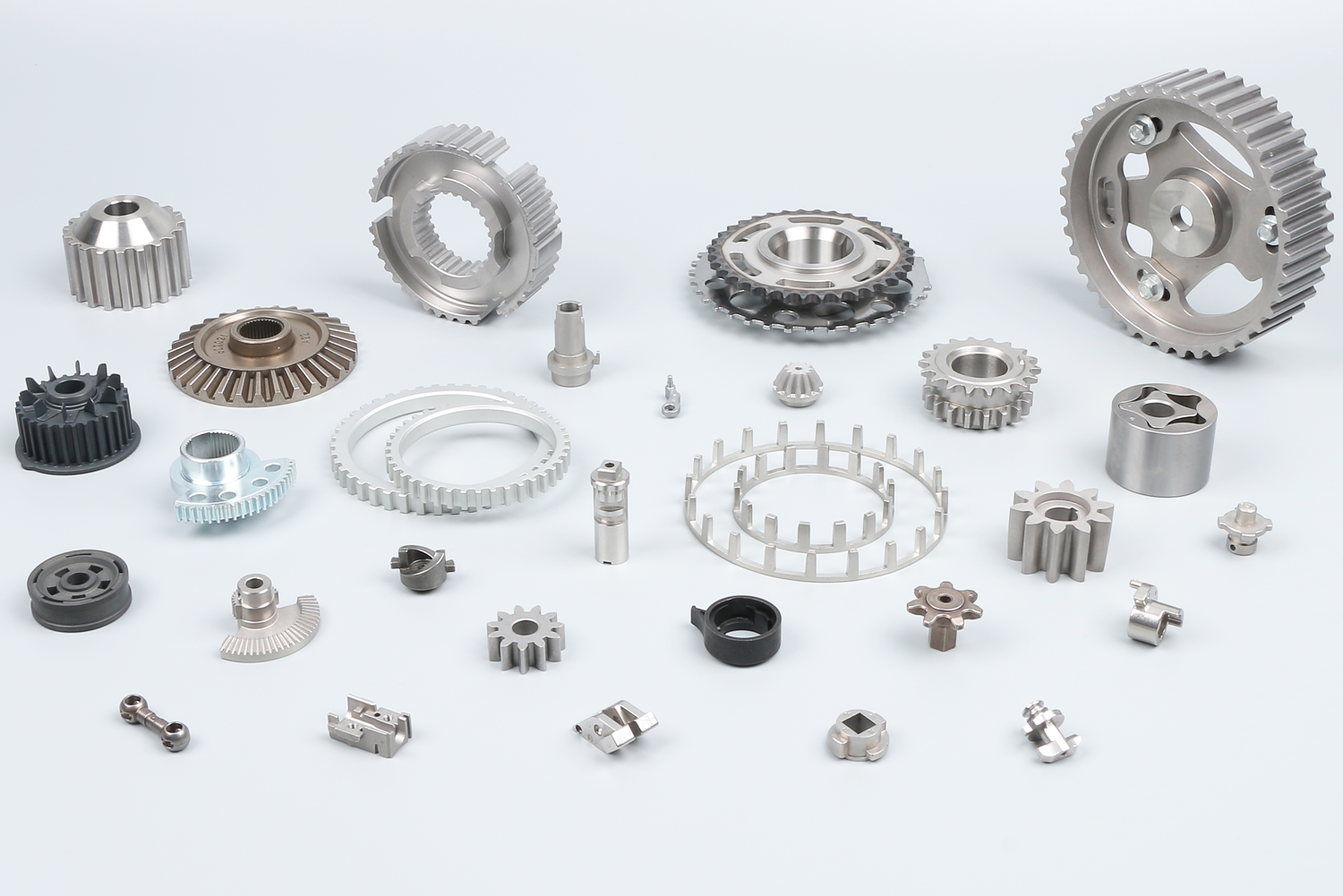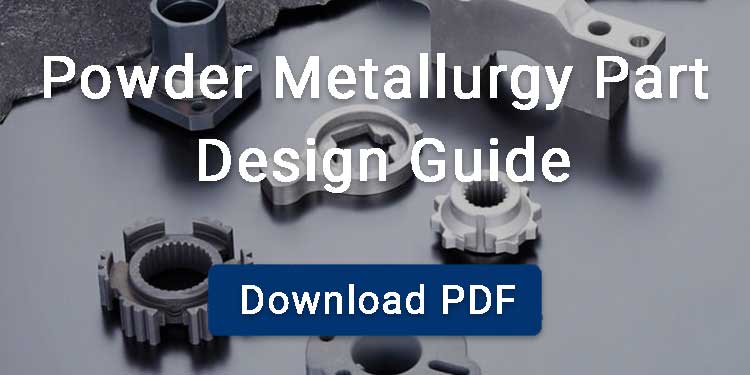Mechanical properties determine whether a powder metal part will perform reliably under real-world conditions. Strength, wear resistance, impact performance, ductility, and fatigue life are not just numbers on a datasheet. They influence how long a component will last, how much load it can carry, and whether it can withstand the stresses of its working environment.
When you design or select powder metallurgy part, you will often find that small differences in these properties can mean the difference between success and premature failure. In the following sections, you will see how each property is defined, the values typically achieved, and the methods used to enhance them for demanding applications.
Contents
What are Powder Metal Parts?
Powder metal parts are manufactured by compacting fine metal powders in a die and then sintering them at high temperatures to bond the particles together. Sintered metal parts can be produced from both ferrous metals (like iron, steel, stainless steel) and non-ferrous metals (such as copper, aluminium, bronze, brass, titanium). By adjusting the composition of these powders, you can tailor the mechanical properties to suit specific applications. With careful control of powder compaction methods and sintering parameters, it is possible to manufacture parts with consistent quality, excellent dimensional accuracy, and reliable performance.

Mechanical Properties of Powder Metal Components
Tensile Strength
Tensile strength is the stress or load that a material can bear before failure; it represents the load-bearing capacity of powder metal components. The tensile strength of powder metallurgy parts is dependent on the material and secondary processing. For example, the TS of ferrous metal powder parts can reach 900 N/mm², which can be increased to 1200 N/mm² through heat treatment or sintering hardening. The high tensile strength of PM components enables them to perform reliably under high loads.
Yield Strength
Yield strength of any powdered metal parts represents the stress under which the component will show permanent deformation.
For example, FC-0205-30 (iron-based powder metalS with ~2% copper and ~0.5% carbon) have a yield strength (0.2%) of around 240 MPa after sintering.
In comparison, FC-0208-50 (iron-based powder metal with ~2% copper and ~0.8% carbon) achieves a tensile yield strength of about 380 MPa after sintering.
This high yield strength ensures the components can maintain their structural integrity under tensile and compressive loads.
Fatigue Strength
Fatigue of the powder metal components represents how much cyclic stress they can withstand. PM components show high fatigue strength due to their porous nature and unique manufacturing methods. FC-0208-50 (iron-based powder metal with ~2% Cu and ~0.8% C) shows an RBF fatigue limit (90% survival) of about 160 MPa after sintering, whereas FL-4405-40 (~4% Ni, ~4% Cu, ~0.5% C) delivers roughly 190 MPa in the as-sintered state.
Impact Resistance
Impact resistance is an important mechanical property of powder metal components that are subjected to shock or collision loads. The sintered powder metallurgy parts show improved impact resistance by controlling their alloy composition and densification. Adding some specific element to metal powder, such as 1-4% of nickel, improves the overall impact resistance of these components.
Ductility
Ductility is the property of a material to deform under tensile strength. Ductility is important for those powder metal components that need to bend during their operation. This can be controlled by managing the pore size of powder metal components. It is represented in terms of elongation percentage. The powder metallurgy components made of ferrous material usually show lower ductility of about 2%.
Wear Resistance
Wear resistance is a material’s ability to withstand degradation from friction, abrasion, or contact with abrasive media. Powder metal components manufactured with powder metallurgy show exceptional wear resistance, as hard and wear-resistant materials can be incorporated into them. For example, carburized PM parts exhibit improved wear resistance when processed under optimized parameters.

Factors Affecting the Mechanical Properties of Powder Metal Parts
Powder Characteristics
The metal powder with finer particles shows effective packing, leading to enhanced green density. As a result, the strength of metal powder components is increased. However, very fine particles can exhibit poor flowability, that is why a well-controlled particle size distribution allows for more efficient packing.
Compaction Pressure
While manufacturing the powder metal components, the green die is prepared by applying high pressure. This competition pressure has a direct effect on the green density. Increased pressure decreases the empty voids between the particles, creating a dense, green compact. As a result, compaction strength, hardness, wear resistance, and yield strength of metal components increase.
Sintering Temperature
The porosity and density of the powder metal component are directly affected by the sintering temperature. As the sintering temperature increases, the density of the components also increases, resulting in an element with improved mechanical properties such as high hardness and strength.
Enhancing the Mechanical Properties of Powder Metal Components
Repressing and Resintering
Repressing and resintering are effective secondary operations in powder metallurgy. In repressing the powder metal component, it is further compacted with high pressure, leading to an enhancement of its dimensional accuracy, whereas in resintering bonding, the powder particle density is increased.
For components made from Fe-2Ni-0.8Mo-0.5C, repressing increased density from 6.79 g/cm³ to between 7.08 and 7.45 g/cm³, at repressing pressures of 414 MPa and 827 MPa, respectively.
Warm Compaction
Warm compaction heats both the powder and the tooling before applying compaction pressure, typically at 120–150 °C. This cost-effective method increases the density of powder metallurgy parts, achieving 7.2–7.5 g/cm³ after sintering.
Heat treatment
Heat treatment processes such as sinter-hardening, carburizing, and tempering can tailor hardness, strength, and ductility in PM components. Carburizing is applied to steel or iron-based PM parts to increase surface hardness and wear resistance.
In this process, the component is heated in a carbon-rich environment, as a result, carbon atoms diffuse into the surface and form hard carbides. This hardened layer improves the load-bearing capacity of the component, retaining a tough, ductile core, which makes it ideal for gears, shafts, and wear-critical components.
Copper Infiltration
Copper infiltration is actually a densification process in PM in which molten copper is drawn to the pores of PM components by capillary action. As a result, the grain boundary bonding of particles increases, causing not only an increase in density but also an enhancement in tensile strength, hardness, and impact resistance.

Resin Impregnation
Resin impregnation is also a post-treatment applied to powder metal components in which the pores of the components are filled with resin. This results in improving wear resistance, corrosion protection, and overall mechanical durability. This is done by wet vacuum, dry vacuum, or anaerobic polyester resin impregnation, followed by curing to create a hardened internal seal. This is applied to the components working under cyclic loads, such as gear housings in the automotive industry.
Powder metallurgy holds vast potential, with applications spanning automobiles, power tools, household appliances, and industrial motors. We are convinced it can drive sustainable development by maximizing material use, reducing waste, and lowering energy consumption.
BLUE supply a full range of standard parts with no mold fees. You can download our product list for free and select what fits your needs. If the part you want is not listed, we provide custom powder metal parts tailored to your applications.



